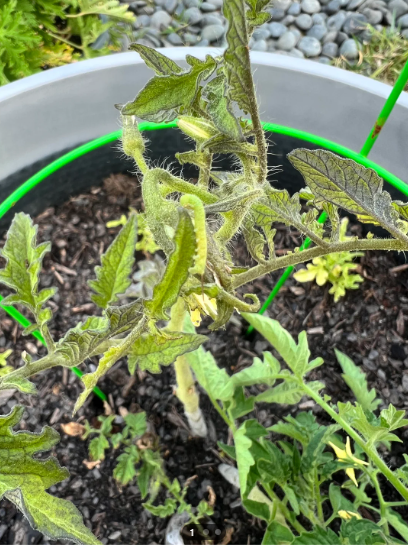One gardener's nightmare returned for a sequel.
The hornworm caterpillar — which can quickly devastate plants — wreaked havoc on a crop of a Redditor's tomatoes last year, and they found two more creatures this year despite having taken steps to prevent a reinfestation.

"My worst fear has come true," the poster wrote in June. "I had a terrible infestation of tomato hornworms last year and I moved my garden and put brand-new potting soil in it hoping it would keep them away."
That didn't do the trick, so the user took to r/tomatoes to ask if Sevin dust would help. The product underwent a reformulation and was banned in California and some countries overseas because of carbaryl's effects on human health. And, generally, pesticides should be used as a last resort.
A handful of commenters noted the hornworms could be handpicked, especially after being spotted with a UV light.
Still, the reappearance of the pests was demoralizing.
Save $10,000 on solar panels without even sharing your phone number Want to go solar but not sure who to trust? EnergySage has your back with free and transparent quotes from fully vetted providers that can help you save as much as $10k on installation. To get started, just answer a few questions about your home — no phone number required. Within a day or two, EnergySage will email you the best local options for your needs, and their expert advisers can help you compare quotes and pick a winner. |
Other ways to keep hornworm caterpillars at bay include offering up sacrificial plants, attracting predators such as wasps and ladybugs, and planting herbs such as basil and dill.
The critters don't need to be killed, though, as they metamorphose into hawk or sphinx moths, which are important pollinators. Smithsonian magazine noted hawk moths can carry pollen more than 18 miles.
This gardener may have been able to keep the hornworm duo away by tilling their soil to kill the insect's larvae and pupae, which can be up to 90% effective, according to the Farmers' Almanac.
"Hornworms aren't in the soil. No need to have moved your garden or changed anything," one commenter wrote. "The moth whose babies are the hornworms found your tomatoes, they will find them wherever they are."
TCD Picks » Upway Spotlight
💡Upway makes it easy to find discounts of up to 60% on premium e-bike brands
Another user listed effective control methods.
"Plant some flowers to attract lady bugs and lace wigs," they said. "Paper wasps will also feed on them. You could also put some netting around the plants to trap in beneficials and release some parasitic wasps."
At least this year's tomato plants hadn't been decimated — perhaps because the caterpillars were not yet the size of a giant's finger.
Join our free newsletter for easy tips to save more, waste less, and help yourself while helping the planet.















